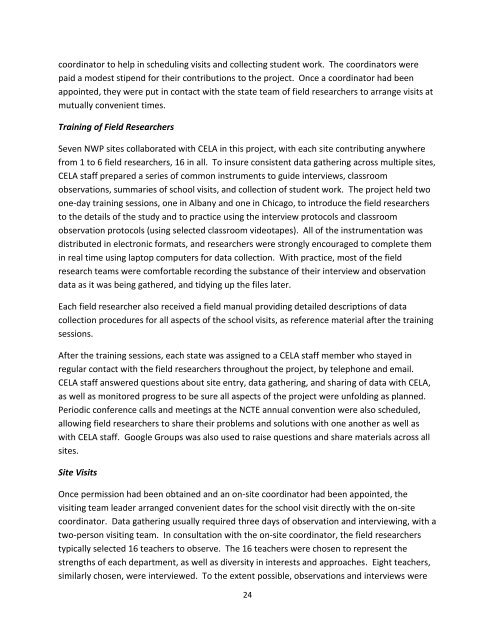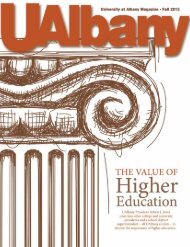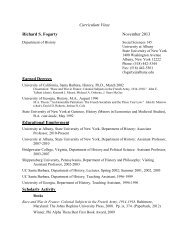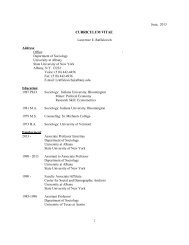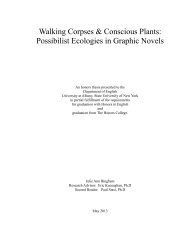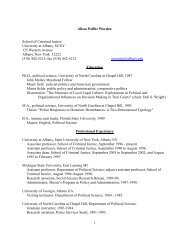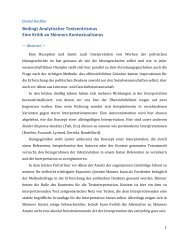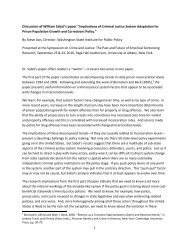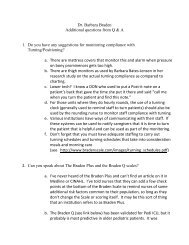The National Study of Writing Instruction - University at Albany
The National Study of Writing Instruction - University at Albany
The National Study of Writing Instruction - University at Albany
Create successful ePaper yourself
Turn your PDF publications into a flip-book with our unique Google optimized e-Paper software.
coordin<strong>at</strong>or to help in scheduling visits and collecting student work. <strong>The</strong> coordin<strong>at</strong>ors were<br />
paid a modest stipend for their contributions to the project. Once a coordin<strong>at</strong>or had been<br />
appointed, they were put in contact with the st<strong>at</strong>e team <strong>of</strong> field researchers to arrange visits <strong>at</strong><br />
mutually convenient times.<br />
Training <strong>of</strong> Field Researchers<br />
Seven NWP sites collabor<strong>at</strong>ed with CELA in this project, with each site contributing anywhere<br />
from 1 to 6 field researchers, 16 in all. To insure consistent d<strong>at</strong>a g<strong>at</strong>hering across multiple sites,<br />
CELA staff prepared a series <strong>of</strong> common instruments to guide interviews, classroom<br />
observ<strong>at</strong>ions, summaries <strong>of</strong> school visits, and collection <strong>of</strong> student work. <strong>The</strong> project held two<br />
one-day training sessions, one in <strong>Albany</strong> and one in Chicago, to introduce the field researchers<br />
to the details <strong>of</strong> the study and to practice using the interview protocols and classroom<br />
observ<strong>at</strong>ion protocols (using selected classroom videotapes). All <strong>of</strong> the instrument<strong>at</strong>ion was<br />
distributed in electronic form<strong>at</strong>s, and researchers were strongly encouraged to complete them<br />
in real time using laptop computers for d<strong>at</strong>a collection. With practice, most <strong>of</strong> the field<br />
research teams were comfortable recording the substance <strong>of</strong> their interview and observ<strong>at</strong>ion<br />
d<strong>at</strong>a as it was being g<strong>at</strong>hered, and tidying up the files l<strong>at</strong>er.<br />
Each field researcher also received a field manual providing detailed descriptions <strong>of</strong> d<strong>at</strong>a<br />
collection procedures for all aspects <strong>of</strong> the school visits, as reference m<strong>at</strong>erial after the training<br />
sessions.<br />
After the training sessions, each st<strong>at</strong>e was assigned to a CELA staff member who stayed in<br />
regular contact with the field researchers throughout the project, by telephone and email.<br />
CELA staff answered questions about site entry, d<strong>at</strong>a g<strong>at</strong>hering, and sharing <strong>of</strong> d<strong>at</strong>a with CELA,<br />
as well as monitored progress to be sure all aspects <strong>of</strong> the project were unfolding as planned.<br />
Periodic conference calls and meetings <strong>at</strong> the NCTE annual convention were also scheduled,<br />
allowing field researchers to share their problems and solutions with one another as well as<br />
with CELA staff. Google Groups was also used to raise questions and share m<strong>at</strong>erials across all<br />
sites.<br />
Site Visits<br />
Once permission had been obtained and an on-site coordin<strong>at</strong>or had been appointed, the<br />
visiting team leader arranged convenient d<strong>at</strong>es for the school visit directly with the on-site<br />
coordin<strong>at</strong>or. D<strong>at</strong>a g<strong>at</strong>hering usually required three days <strong>of</strong> observ<strong>at</strong>ion and interviewing, with a<br />
two-person visiting team. In consult<strong>at</strong>ion with the on-site coordin<strong>at</strong>or, the field researchers<br />
typically selected 16 teachers to observe. <strong>The</strong> 16 teachers were chosen to represent the<br />
strengths <strong>of</strong> each department, as well as diversity in interests and approaches. Eight teachers,<br />
similarly chosen, were interviewed. To the extent possible, observ<strong>at</strong>ions and interviews were<br />
24


